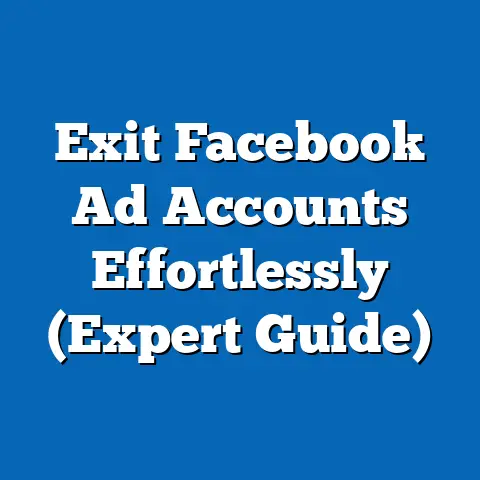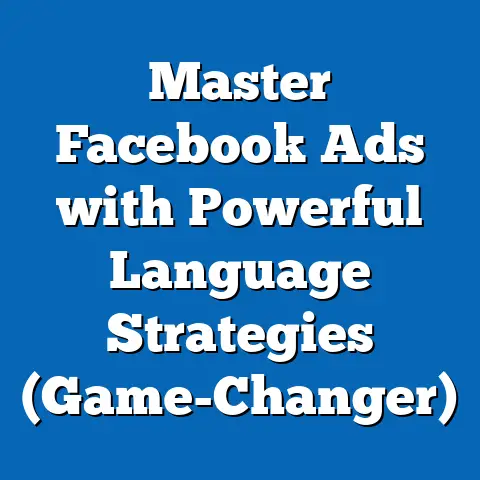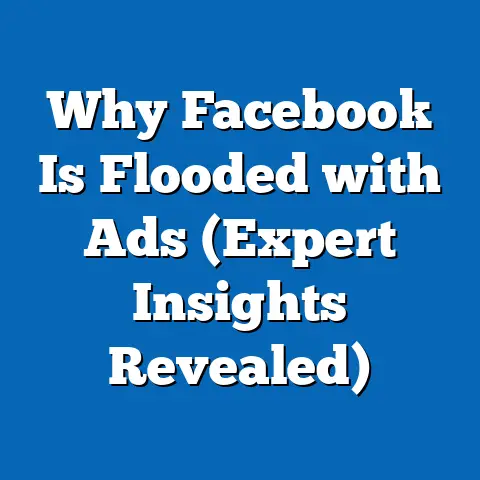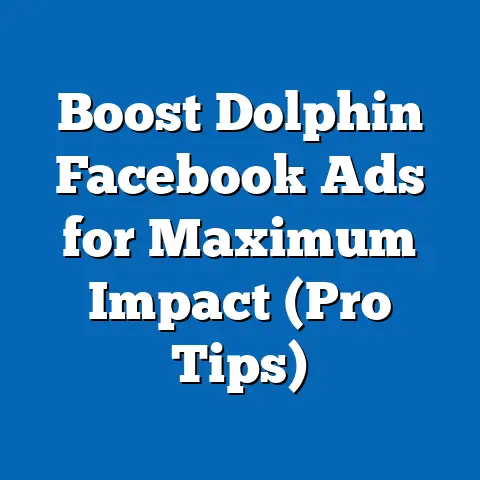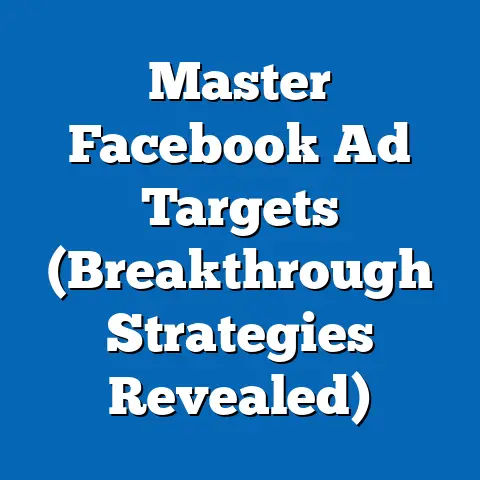Unlock fb ad Library Secrets (Proven Success Strategies)
Imagine you’re gearing up for an outdoor adventure. You wouldn’t head into the wilderness without proper waterproof gear, right? A downpour could ruin your trip, and your investment in the experience would be soaked away. In the same vein, you shouldn’t launch Facebook ad campaigns without robust, fail-proof strategies. The digital marketing world is just as unpredictable as the weather, and without the right “waterproofing,” your advertising efforts might just get drenched.
That’s where the Facebook Ad Library comes in. It’s not just a collection of ads; it’s a treasure trove of insights, competitor strategies, and proven techniques that can shield your campaigns from failure and propel them toward success. Just as waterproof materials protect against the elements, effective Facebook ad strategies safeguard businesses against the unpredictability of digital marketing. I’ve spent years navigating the Facebook Ads landscape, and I can tell you firsthand: being prepared and adaptable is absolutely crucial.
Understanding the Facebook Ad Library
The Facebook Ad Library is essentially a searchable database of all active ads running across Facebook, Instagram, Messenger, and Audience Network. Think of it as a giant, public archive of advertising campaigns. It’s a goldmine of information for anyone looking to understand what works, what doesn’t, and what their competitors are up to.
Transparency is the Name of the Game:
The Ad Library was created to promote transparency in advertising, particularly regarding political and issue-based ads. Following concerns about misinformation and foreign interference in elections, Facebook made a commitment to greater transparency. This means that you can see who is paying for an ad, who they are targeting, and how much they are spending.
What Kind of Ads Can You Find?
The Ad Library isn’t just for political campaigns; it includes ads from businesses, non-profits, and individuals across a wide range of industries. You can find:
- Brand Awareness Ads: Focused on increasing visibility and recognition.
- Lead Generation Ads: Designed to capture contact information from potential customers.
- Conversion Ads: Aiming to drive sales, sign-ups, or other specific actions.
- Engagement Ads: Intended to spark conversations, shares, and likes.
- App Install Ads: Encouraging users to download mobile applications.
The Ad Library as a Competitive Intelligence Tool:
For marketers like myself, the Ad Library is invaluable for competitive analysis. It allows you to:
- See what your competitors are promoting: What products or services are they highlighting? What offers are they making?
- Analyze their messaging and creative: What language are they using? What visuals are they employing?
- Understand their targeting strategies: Who are they trying to reach? What demographics and interests are they targeting?
- Identify emerging trends: What new ad formats or approaches are gaining traction?
By studying the Ad Library, you can gain a significant advantage in crafting your own campaigns. You can learn from the successes (and failures) of others, avoid costly mistakes, and develop strategies that are tailored to your specific market and audience.
Takeaway: The Facebook Ad Library is a powerful tool for understanding the advertising landscape, analyzing competitors, and identifying trends. It’s your first stop when planning any Facebook ad campaign.
The Value of Analyzing Competitors
Let’s be honest, no one operates in a vacuum. Understanding your competitors is paramount to crafting a successful ad strategy. The Facebook Ad Library makes competitor analysis easier than ever before. It’s like having a secret window into their marketing department!
Why is Competitor Analysis Important?
- Gain Insights: See what messaging and visuals resonate with your target audience.
- Identify Opportunities: Spot gaps in the market that your competitors aren’t addressing.
- Avoid Pitfalls: Learn from their mistakes and avoid repeating them.
- Stay Ahead of the Curve: Keep tabs on emerging trends and adapt your strategies accordingly.
Navigating the Facebook Ad Library for Competitive Insights:
Here’s how to effectively use the Ad Library to analyze your competitors:
- Start with a List: Identify your key competitors – those who offer similar products or services and target the same audience.
- Search by Name: Enter your competitor’s Facebook page name in the Ad Library search bar.
- Filter and Sort: Use the filters to narrow down your search. You can filter by:
- Country: See which countries they’re targeting.
- Ad Category: Focus on specific types of ads (e.g., all ads, political ads).
- Platforms: See which platforms they’re using (Facebook, Instagram, etc.).
- Analyze Individual Ads: Click on an ad to see more details, including:
- Ad Creative: The image, video, and text used in the ad.
- Landing Page: The URL the ad directs users to.
- Impressions: The number of times the ad has been shown.
- Spend: The estimated amount spent on the ad (in a range).
- Look for Patterns: As you analyze multiple ads, look for common themes and strategies. What messaging are they consistently using? What visuals are most prominent? Who are they targeting?
- Country: See which countries they’re targeting.
- Ad Category: Focus on specific types of ads (e.g., all ads, political ads).
- Platforms: See which platforms they’re using (Facebook, Instagram, etc.).
- Ad Creative: The image, video, and text used in the ad.
- Landing Page: The URL the ad directs users to.
- Impressions: The number of times the ad has been shown.
- Spend: The estimated amount spent on the ad (in a range).
Examples of Successful Ads and Formats:
- Carousel Ads: These are great for showcasing multiple products or features. I’ve seen companies use them to highlight different models of cars, various flavors of food, or different benefits of a software product. The key is to have compelling visuals and concise descriptions for each item in the carousel.
- Video Ads: Video is incredibly engaging, and the Ad Library is full of examples of brands using video to tell stories, demonstrate products, and connect with their audience. Look for videos that are short, visually appealing, and have a clear call to action.
- Lead Generation Ads: These ads are designed to collect contact information directly within Facebook. They often offer something valuable in exchange for the user’s email address or phone number, such as a free ebook, a discount code, or a consultation.
Identifying Patterns:
The real magic happens when you start identifying patterns in your competitors’ ads.
- Messaging: Are they focusing on price, quality, convenience, or something else?
- Visuals: Are they using professional photography, user-generated content, or illustrations?
- Call to Action: Are they encouraging users to “Shop Now,” “Learn More,” or “Sign Up”?
- Targeting: Who are they trying to reach? What demographics, interests, and behaviors are they targeting?
By understanding these patterns, you can gain valuable insights into what works in your industry and what doesn’t.
Takeaway: Competitor analysis is essential for crafting a successful Facebook ad strategy. The Ad Library makes it easy to see what your competitors are doing, learn from their successes and failures, and stay ahead of the curve.
Proven Success Strategies Derived from the Ad Library
Okay, so you’ve explored the Facebook Ad Library and analyzed your competitors’ campaigns. Now, let’s translate those insights into actionable strategies that you can use to improve your own ads. Here are some proven success strategies I’ve personally seen work, all derived from the Ad Library:
-
Targeting the Right Audience
One of the most common mistakes I see is businesses targeting too broad of an audience. It’s like casting a wide net and hoping to catch something – you might get lucky, but you’re likely to waste a lot of resources. The Ad Library can help you refine your targeting strategy.
- Audience Segmentation: Successful ads often target specific segments of the audience with tailored messaging. For example, a fitness brand might target different ads to people interested in weight loss, muscle building, or yoga.
- Custom Audiences: The Ad Library can give you ideas for creating custom audiences based on website visitors, email lists, or app users.
- Lookalike Audiences: You can also use the Ad Library to identify potential interests and behaviors to target with lookalike audiences (audiences that are similar to your existing customers).
Example: I once worked with a local bakery that was struggling to attract new customers. After analyzing their competitors’ ads in the Ad Library, we noticed that they were all targeting a very broad audience. We decided to segment our audience based on interests like “baking,” “desserts,” and “local food.” We also created a custom audience of people who had visited our website and a lookalike audience based on that custom audience. The result? Our ad performance skyrocketed, and we saw a significant increase in sales. 2. Creative Ad Formats
Facebook offers a variety of ad formats, from simple image ads to interactive experiences. The Ad Library can help you determine which formats are most effective for your goals.
- Video Ads: As I mentioned earlier, video is incredibly engaging. If you’re not using video in your ads, you’re missing out.
- Carousel Ads: These are great for showcasing multiple products or features.
- Collection Ads: These ads are designed for e-commerce businesses and allow users to browse products directly within Facebook.
- Instant Experience Ads: These are full-screen, mobile-optimized ads that offer an immersive experience.
Use Case: A client of mine, a clothing retailer, was hesitant to invest in video ads. They thought it would be too expensive and time-consuming. However, after seeing the success of video ads in the Ad Library, they decided to give it a try. We created a short, visually appealing video showcasing their latest collection. The video ad outperformed all of their other ads, driving a significant increase in website traffic and sales. 3. Compelling Copywriting
Even the most beautiful ad will fail if the copy is boring or confusing. The Ad Library can help you craft compelling ad copy that grabs attention and drives action.
- Headlines: Your headline is the first thing people will see, so it needs to be attention-grabbing. Use strong verbs, ask questions, or make a bold statement.
- Body Text: Your body text should be concise and persuasive. Highlight the benefits of your product or service and explain why people should take action.
- Call to Action: Your call to action should be clear and direct. Tell people exactly what you want them to do (e.g., “Shop Now,” “Learn More,” “Sign Up”).
Example: I’ve noticed that ads with a sense of urgency often perform well. For example, “Limited Time Offer” or “Sale Ends Soon.” The Ad Library is a great place to find examples of effective headlines and calls to action. 4. A/B Testing Strategies
A/B testing is the process of testing different versions of your ads to see which performs best. The Ad Library can give you ideas for what to test.
- Headlines: Try different headlines to see which grabs the most attention.
- Visuals: Test different images or videos to see which resonates best with your audience.
- Call to Action: Experiment with different calls to action to see which drives the most conversions.
- Targeting: Try targeting different audiences to see which is most responsive.
Example: I always recommend testing different versions of your ads. I once ran an A/B test on a client’s ad, testing two different headlines. One headline focused on the price of the product, while the other focused on the benefits. The headline that focused on the benefits outperformed the price-focused headline by 30%.
Targeting the Right Audience
One of the most common mistakes I see is businesses targeting too broad of an audience. It’s like casting a wide net and hoping to catch something – you might get lucky, but you’re likely to waste a lot of resources. The Ad Library can help you refine your targeting strategy.
- Audience Segmentation: Successful ads often target specific segments of the audience with tailored messaging. For example, a fitness brand might target different ads to people interested in weight loss, muscle building, or yoga.
- Custom Audiences: The Ad Library can give you ideas for creating custom audiences based on website visitors, email lists, or app users.
- Lookalike Audiences: You can also use the Ad Library to identify potential interests and behaviors to target with lookalike audiences (audiences that are similar to your existing customers).
Example: I once worked with a local bakery that was struggling to attract new customers. After analyzing their competitors’ ads in the Ad Library, we noticed that they were all targeting a very broad audience. We decided to segment our audience based on interests like “baking,” “desserts,” and “local food.” We also created a custom audience of people who had visited our website and a lookalike audience based on that custom audience. The result? Our ad performance skyrocketed, and we saw a significant increase in sales. 2. Creative Ad Formats
Facebook offers a variety of ad formats, from simple image ads to interactive experiences. The Ad Library can help you determine which formats are most effective for your goals.
- Video Ads: As I mentioned earlier, video is incredibly engaging. If you’re not using video in your ads, you’re missing out.
- Carousel Ads: These are great for showcasing multiple products or features.
- Collection Ads: These ads are designed for e-commerce businesses and allow users to browse products directly within Facebook.
- Instant Experience Ads: These are full-screen, mobile-optimized ads that offer an immersive experience.
Use Case: A client of mine, a clothing retailer, was hesitant to invest in video ads. They thought it would be too expensive and time-consuming. However, after seeing the success of video ads in the Ad Library, they decided to give it a try. We created a short, visually appealing video showcasing their latest collection. The video ad outperformed all of their other ads, driving a significant increase in website traffic and sales. 3. Compelling Copywriting
Even the most beautiful ad will fail if the copy is boring or confusing. The Ad Library can help you craft compelling ad copy that grabs attention and drives action.
- Headlines: Your headline is the first thing people will see, so it needs to be attention-grabbing. Use strong verbs, ask questions, or make a bold statement.
- Body Text: Your body text should be concise and persuasive. Highlight the benefits of your product or service and explain why people should take action.
- Call to Action: Your call to action should be clear and direct. Tell people exactly what you want them to do (e.g., “Shop Now,” “Learn More,” “Sign Up”).
Example: I’ve noticed that ads with a sense of urgency often perform well. For example, “Limited Time Offer” or “Sale Ends Soon.” The Ad Library is a great place to find examples of effective headlines and calls to action. 4. A/B Testing Strategies
A/B testing is the process of testing different versions of your ads to see which performs best. The Ad Library can give you ideas for what to test.
- Headlines: Try different headlines to see which grabs the most attention.
- Visuals: Test different images or videos to see which resonates best with your audience.
- Call to Action: Experiment with different calls to action to see which drives the most conversions.
- Targeting: Try targeting different audiences to see which is most responsive.
Example: I always recommend testing different versions of your ads. I once ran an A/B test on a client’s ad, testing two different headlines. One headline focused on the price of the product, while the other focused on the benefits. The headline that focused on the benefits outperformed the price-focused headline by 30%.
Takeaway: The Facebook Ad Library is a treasure trove of proven success strategies. By analyzing successful ads, you can learn how to target the right audience, create compelling ad formats, write persuasive copy, and implement effective A/B testing strategies.
Leveraging Trends and Insights
The Facebook Ad Library isn’t just a historical archive; it’s also a real-time snapshot of what’s happening in the advertising world right now. By monitoring the Ad Library regularly, you can stay ahead of trends and adapt your strategies accordingly.
Staying Ahead of the Curve:
- Daily or Weekly Check-ins: Make it a habit to check the Ad Library at least once a week to see what new ads are running in your industry.
- Industry News: Keep up with industry news and blogs to learn about emerging trends.
- Social Media: Follow industry influencers and thought leaders on social media to stay informed.
Seasonal and Cultural Trends:
- Holidays: Plan your ad campaigns around major holidays like Christmas, Thanksgiving, and Valentine’s Day.
- Seasonal Events: Consider seasonal events like back-to-school, summer vacation, and the start of the new year.
- Cultural Moments: Be aware of cultural moments like the Olympics, the Super Bowl, and major political events.
Adapting Your Strategies:
- Be Flexible: Don’t be afraid to change your strategies based on emerging trends.
- Experiment: Try new ad formats, messaging, and targeting options.
- Monitor Results: Track your results closely to see what’s working and what’s not.
Example: During the COVID-19 pandemic, I noticed a surge in ads promoting online learning platforms and home fitness equipment. By quickly adapting my clients’ strategies to focus on these trends, we were able to capitalize on the increased demand and drive significant results.
Takeaway: The Facebook Ad Library is a valuable tool for staying ahead of trends and adapting your strategies accordingly. By monitoring the Ad Library regularly, you can identify emerging trends, plan your campaigns around seasonal and cultural events, and experiment with new ad formats and messaging.
Real-World Case Studies
Let’s dive into some real-world examples of brands that have successfully leveraged the Facebook Ad Library to improve their advertising performance. These case studies will give you a better understanding of how to apply the strategies we’ve discussed.
Case Study 1: Local Restaurant Chain
- Challenge: A local restaurant chain was struggling to attract new customers and increase sales.
- Approach: They used the Facebook Ad Library to analyze their competitors’ ads and identify successful strategies. They noticed that their competitors were using video ads to showcase their food and create a sense of atmosphere.
- Strategy: They created a series of short, visually appealing video ads highlighting their most popular dishes and showcasing the restaurant’s ambiance. They also targeted their ads to people who lived near their restaurants and were interested in food and dining.
- Results: Their ad engagement rates increased by 50%, and their sales increased by 20%.
Case Study 2: E-commerce Startup
- Challenge: An e-commerce startup was struggling to generate leads and drive sales.
- Approach: They used the Facebook Ad Library to analyze their competitors’ ads and identify successful targeting strategies. They noticed that their competitors were targeting a very specific niche audience with tailored messaging.
- Strategy: They created a series of ads targeting a specific niche audience with messaging that resonated with their interests and needs. They also offered a special discount to new customers.
- Results: Their lead generation increased by 100%, and their sales increased by 30%.
Case Study 3: Non-Profit Organization
- Challenge: A non-profit organization was struggling to raise awareness and donations.
- Approach: They used the Facebook Ad Library to analyze their competitors’ ads and identify successful storytelling techniques. They noticed that their competitors were using emotional stories to connect with their audience and inspire them to donate.
- Strategy: They created a series of ads featuring emotional stories about the people they were helping. They also made it easy for people to donate directly through the ads.
- Results: Their donations increased by 75%, and their brand awareness increased significantly.
Takeaway: These case studies demonstrate the power of the Facebook Ad Library. By analyzing successful ads and implementing proven strategies, you can significantly improve your advertising performance.
Conclusion: The Path to Mastering Facebook Advertising
Just as waterproof gear is essential for outdoor adventurers, mastering the Facebook Ad Library is crucial for marketers seeking success in digital advertising. The insights and strategies we’ve discussed in this guide can help you craft winning campaigns, stay ahead of trends, and achieve your advertising goals.
Remember, continuous learning and adaptation are key in the fast-paced world of Facebook ads. The Ad Library is a constantly evolving resource, so make it a habit to check it regularly and stay informed about the latest trends and best practices.
Take the insights you’ve gained from this article and apply them to your own campaigns. Experiment with different strategies, monitor your results, and don’t be afraid to make changes along the way. With dedication and a willingness to learn, you can unlock the secrets of the Facebook Ad Library and achieve mastery in Facebook advertising.
Now, go forth and conquer the Facebook Ads landscape! Your waterproof advertising journey starts now.


